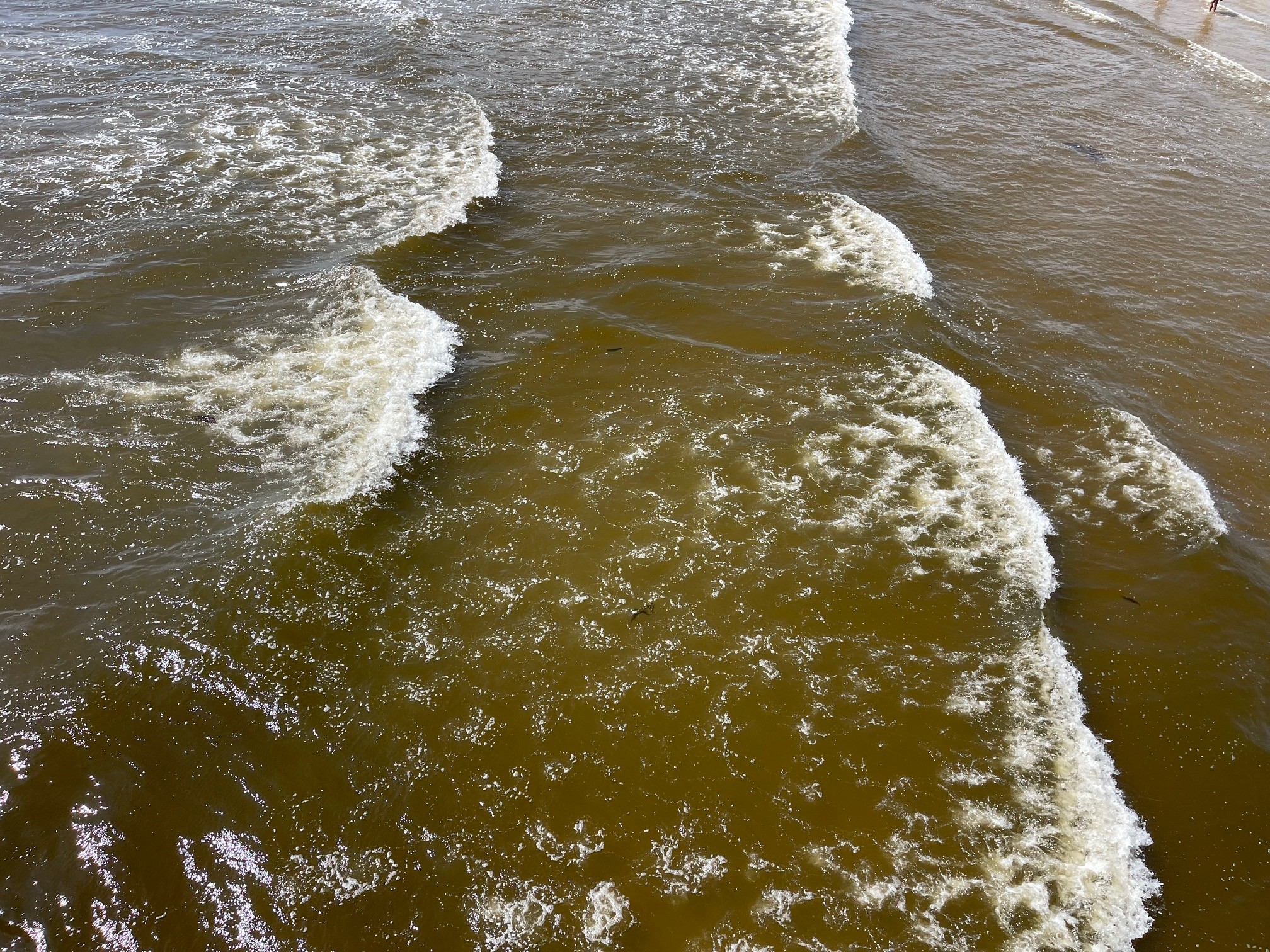
Marine mammal rescue organizations report hundreds of sea lions and dolphins have died, fallen sick due to blooms
|
|
If you’ve visited the beach in San Lis Obispo County over the past couple weeks, you probably noticed the discolored, brownish “Red Tide” in the shore break. So what is a Red Tide, and is it harmful to humans and sea life? Well, it can be if precautions aren’t taken while enjoying our coastlines this time of year. Red tides are a natural but sometimes harmful type of algal bloom, as National Geographic writes, “caused by several different microorganisms, all phytoplankton that use light energy to grow.” Red tides are nothing new in California, and predate Spanish settlers as history shows indigenous tribes were aware of and took their own precautions during algal blooms. “But with human influence and climate change,” National Geographic adds, “the nutrient-hungry algae is exacerbated, inflicting harm on animals and people alike.” Experts suggest three species of dinoflagellates and diatom are responsible for toxic blooms, warning the blooms have serious effects on sea lions and dolphins, and even humans who consume contaminated seafood at risk of amnesic shellfish poisoning. According to ABC News, “marine mammal rescue organizations have been swamped with reports of sick and dead sea lions and dolphins. “Hundreds of sea lions are believed to have died in the first weeks of June,” according to a statement by the National Oceanic and Atmospheric Administration's National Marine Fisheries Service, known as NOAA Fisheries. The bloom affecting the coastline closer to home here in Central and Southern California, appears to be caused by diatom pseudo-nitzschia, as Surfrider’s Bill Hickman writes for our California region site, and “can release a harmful neurotoxin called domoic acid,” which can be harmful to marine animals, birds or humans that consume contaminated fish, shellfish or crustaceans. Local surfers have also expressed an increase in sinus infections, breathing issues, itchy skin or rashes after surfing during the Red Tide. To avoid allergic-like reactions to the bloom, it’s best to avoid extended water contact (particularly submerging your head), and to bathe immediately after sessions and wash out wetsuits thoroughly. As the Surfrider Foundation has stressed, please pay attention to local seafood advisories reported by the California Department of Public Health (CA Fish Advisory Map), and call the CDFW Domoic Acid Fishery Closure Information Line at (831) 649-2883 for updated information. To report marine wildlife strandings use the numbers provided on the map published to our California Regional Site. Be safe out there in the water this summer! |

